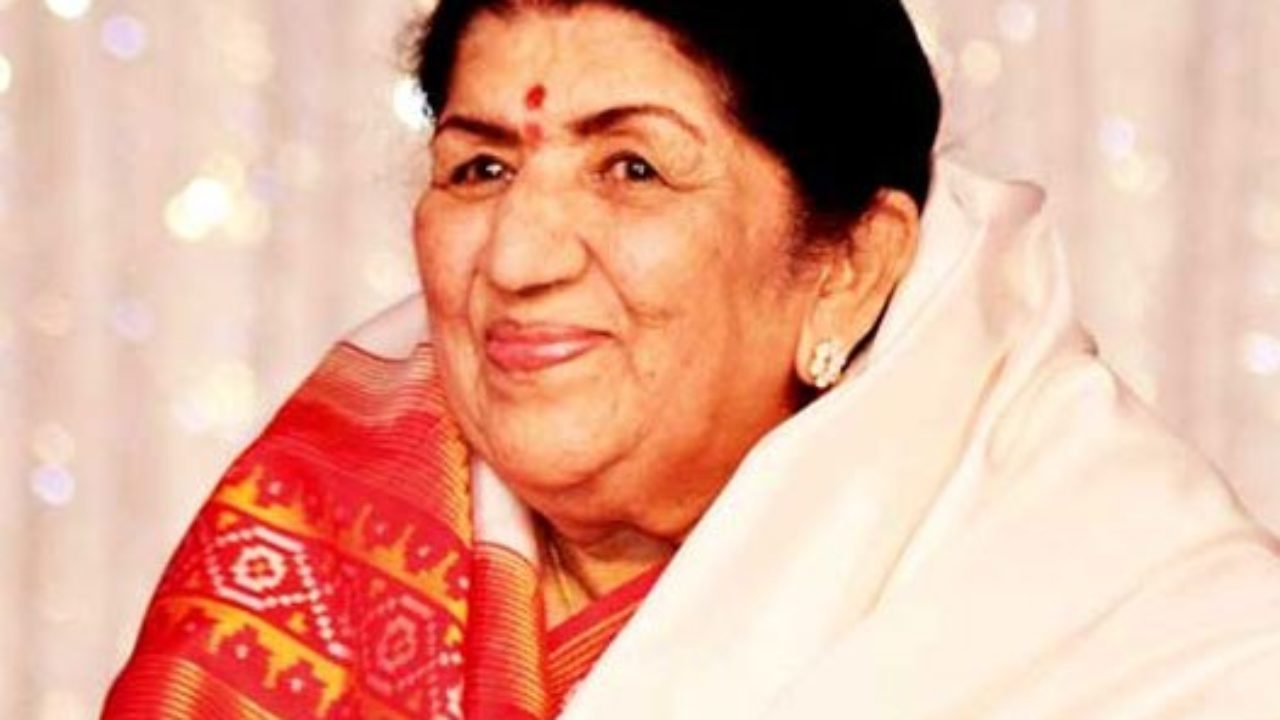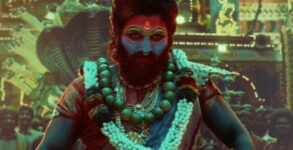Lata Mangeshkar was born in Indore on September 28, 1929, and became, quite simply, the most popular playback singer in Bollywood’s history. She has sung for over 50 years for actresses from Nargis to Preity Zinta, as well as having recorded albums of all kinds (ghazals, pop, etc). Until the 1991 edition, when her entry disappeared, the Guinness Book of World Records listed her as the most-recorded artist in the world with not less than 30,000 solo, duet,and chorus-backed songs recorded in 20 Indian languages between 1948 and 1987. Today that number might have reached 40,000!
She was born the daughter of Dinanath Mangeshkar, the owner of a theater company and a reputed classical singer in his own right. He started giving Lata singing lessons from the age of five, and she also studied with renowned singers Aman Ali Khan Sahib and Amanat Khan. Even at a young age she displayed a God-given musical gift and could master vocal exercises the first time.
Ironically, for someone of her stature, she made her entry into Bollywood at the wrong time – around the 1940s, when bass singers with heavily nasal voices, such as Noor Jehan and Shamshad Begum were in style. She was rejected from many projects because it was believed that her voice was too high-pitched and thin. The circumstances of her entry into the industry were no less inauspicious – her father died in 1942, the responsibility of earning income to support her family fell upon her, and between 1942 and 1948 she acted in as many as eight films in Hindi and Marathi to take care of economic hardships. She made her debut as a playback singer in the Marathi film Kiti Hasaal (1942) but, ironically, the song was edited out!
However, in 1948, she got her big break with Ghulam Haider in the film Majboor (1948), and 1949 saw the release of four of her films: Mahal (1949), Dulari (1949), Barsaat (1949), and Andaz (1949); all four of them became runaway hits, with their songs reaching to heights of what was until then unseen popularity. Her unusually high-pitched singing rendered the trend of heavily nasal voices of the day totally obsolete and, within a year, she had changed the face of playback singing forever. The only two lower-pitched singers to survive her treble onslaught to a certain extent were Geeta Dutt and Shamshad Begum.
Her singing style was initially reminiscent of Noor Jehan, but she soon overcame that and evolved her own distinctive style. Her sister, Asha Bhosle, too, came up in the late 1950s and the two of them were the queens of Indian playback singing right through to the 1990s. Her voice had a special versatile quality, which meant that finally music composers could stretch their creative experiments to the fullest. Although all her songs were immediate hits under any composer, it was the composers C. Ramchandra and Madan Mohan who made her sound her sweetest and challenged her voice like no other music director.
The 1960s and 1970s saw her go from strength to strength, even as there were accusations that she was monopolizing the playback-singing industry. However, in the 1980s, she cut down her workload to concentrate on her shows abroad. Today, Lata sings infrequently despite a sudden resurgence in her popularity, but even today some of Hindi Cinema’s biggest hits, including Dilwale Dulhania Le Jayenge (1995), Dil to Pagal Hai (1997), and Veer Zaara (2004) feature her legendary voice.
No matter which female playback singer breaks through in any generation, she cannot replace the timeless voice of Lata Mangeshkar. She is an icon byond icons.
Sister of Asha Bhosle, Daughter of Dinanath Mangeshkar, a legendary playback singer in Indian movies, she recorded over 30,000 songs in 14 Indian languages, making her the most recorded voice in history.
Was awarded the Bharatha Rathna, the highest civilian honor by the Government of India.
Mentioned in the song “Brimful of Asha” by Cornershop. (The title refers to her sister, Asha Bhosle, who is also mentioned in the song.).
In an interview,Lata Mangeshkar herself disclosed on her 84th birthday in September,2013, “Ghulam Haider is truly my Godfather. It was his confidence in me that he fought for me to tuck me into the Hindi Film Industry which otherwise had initially rejected me.Remembering her early rejection, Lata once said,” Ghulam Haiderwas the first music director who showed complete faith in my talent. He introduced me to many film producers including S. Mukherji,a big name in film production, but when he said my voice was “too thin” to use in his film, Ghulam Haider was furious. Hence, finally he convinced Bombay Talkies, a banner bigger than S. Mukherji and introduced me through their movie Majboor (1948). Lata’s first big breakthrough film song was “Dil mera tora, mujhe kahi ka na chhoda tere pyaar ne” lyrics by Nazim Panipati, composed by Ghulam Haider.
International DJ Lord Paramour sampled her vocals for their song “Jalnina”. They did that as a tribute to her.
Black Thought & Mos Def song Hurricane sampled an old song by Lata Mangeshkar. This was for the album Okayplayer Bollywood Remake – Deleted Scenes.
International NRI singer Lata Ramasar was named after the legend Lata Mangeshkar. She sang the disco songs “The Greatest Name That Lives” and “Highway Xpress” in the year 1980. Her songs are now frequently remixed by DJ”s around the world.


















